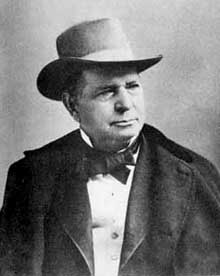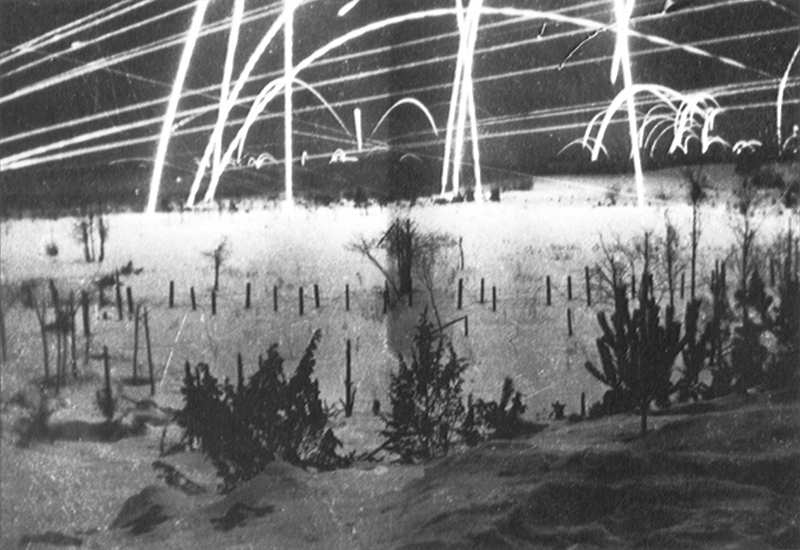|
Saboted Light Armor Penetrator
The saboted light armor penetrator (SLAP) family of firearm ammunition is designed to penetrate armor more efficiently than standard armor-piercing ammunition. In the US it was developed by the Marine Corps during the mid/late 1980s and was approved for service use in 1990 during Operation Desert Storm. It uses a reduced caliber, heavy metal (tungsten) .30 inch diameter penetrator wrapped in a plastic sabot of .50 inch diameter, and the .308 SLAP round was a .223 inch diameter penetrator core within the .308 inch plastic sabot. Design and use The SLAP design incorporates a polymer sabot, which allows for the use of a tungsten penetrator projectile of a lesser diameter than the original bore. By using the casing of a large cartridge with a lightweight projectile, the velocity of the projectile is greatly increased and the sectional density is improved without requiring a (potentially dangerous) increase in chamber pressure. SLAP rounds have been designed for use against ... [...More Info...] [...Related Items...] OR: [Wikipedia] [Google] [Baidu] |
Firearm
A firearm is any type of gun that uses an explosive charge and is designed to be readily carried and operated by an individual. The term is legally defined further in different countries (see legal definitions). The first firearms originated in 10th-century China, when bamboo tubes containing gunpowder and pellet projectiles were mounted on spears to make the portable fire lance, operable by a single person, which was later used effectively as a shock weapon in the siege of De'an in 1132. In the 13th century, fire lance barrels were replaced with metal tubes and transformed into the metal-barreled hand cannon. The technology gradually spread throughout Eurasia during the 14th century. Older firearms typically used black powder as a propellant, but modern firearms use smokeless powder or other explosive propellants. Most modern firearms (with the notable exception of smoothbore shotguns) have rifled barrels to impart spin to the projectile for improved flight stabili ... [...More Info...] [...Related Items...] OR: [Wikipedia] [Google] [Baidu] |
Muzzle Brake
A muzzle brake or recoil compensator is a device connected to, or a feature integral (ported barrel) to the construction of, the muzzle or barrel of a firearm or cannon that is intended to redirect a portion of propellant gases to counter recoil and unwanted muzzle rise. Barrels with an integral muzzle brake are often said to be ported. The concept of a muzzle brake was first introduced for artillery. It was a common feature on many anti-tank guns, especially those mounted on tanks, in order to reduce the area needed to take up the strokes of recoil and kickback. They have been used in various forms for rifles and pistols to help control recoil and the rising of the barrel that normally occurs after firing. They are used on pistols for practical pistol competitions, and are usually called compensators in this context.STI article o ... [...More Info...] [...Related Items...] OR: [Wikipedia] [Google] [Baidu] |
Olin Corp
Olin Corporation is an American manufacturer of ammunition, chlorine, and sodium hydroxide. The company traces its roots to two companies, both founded in 1892: Franklin W. Olin's Equitable Powder Company and the Mathieson Alkali Works. Accidents at Olin chemical plants have exposed employees and nearby residents to health hazards. History Founding and expansion (1890s-1900s) The company was started by Franklin W. Olin, Franklin Walter Olin in Niagara Falls, New York as the Equitable Powder Company. Olin created the company for the purpose of supplying the area's coal mines and limestone quarries with explosives. Olin's blasting and gunpowder company expanded into the production of cartridge (firearms), cartridges in 1898. The company bought a paper manufacturer (the Ecusta Paper Company in Pisgah Forest, North Carolina),''Ecusta'' ... [...More Info...] [...Related Items...] OR: [Wikipedia] [Google] [Baidu] |
Winchester Repeating Arms Company
The Winchester Repeating Arms Company was a prominent American manufacturer of repeating firearms and ammunition. The firm was established in 1866 by Oliver Winchester and was located in New Haven, Connecticut. The firm went into receivership in 1931 and was bought by the Western Cartridge Company, a forerunner of the Olin Corporation. The Winchester brand name is still owned by the Olin Corporation, which makes ammunition under that name. The Winchester name is also used under license for firearms produced by two subsidiaries of the Herstal Group – FN Herstal of Belgium and the Browning Arms Company of Ogden, Utah. History Early history Predecessors The ancestor of the Winchester Repeating Arms Company was the Horace Smith and Daniel Wesson partnership of Norwich, Connecticut (not to be confused with the famous Smith & Wesson Revolver Company founded later by the same men). Smith and Wesson acquired Lewis Jennings' improved version of inventor Walter Hunt's 18 ... [...More Info...] [...Related Items...] OR: [Wikipedia] [Google] [Baidu] |
Air Power Australia
Air Power Australia is a private non-profit Australian think tank. It was formed by Dr Carlo Kopp and Peter Goon in October 2004. The stated primary aim of the organisation is 'air power Airpower or air power consists of the application of military aviation, military strategy and strategic theory to the realm of aerial warfare and close air support. Airpower began in the advent of powered flight early in the 20th century. A ... research and analysis, especially in the context of a modern integrated joint national force structure.' Air Power Australia is not affiliated with the Department of Defence, the Australian Defence Force or any other Australian Commonwealth government organisation. Papers The Air Power Australia website archives only a few articles and papers, about 350 dealing mostly with contemporary military aviation and Australian defense issues. The Air Power Australia Analyses journal (ISSN 1832-2433) is also hosted by the website. Its stated aim is to ... [...More Info...] [...Related Items...] OR: [Wikipedia] [Google] [Baidu] |
QJG-02
The QJG-02, known by its export version as the CS/LM2, is a Chinese anti-aircraft heavy machine gun manufactured by Norinco for the People's Liberation Army. An updated variant, the QJG-02G, also known as the Type CS/LM2A, was later released. Design and development The QJG-02 is China's replacement for the Type 58, a direct copy of the Soviet KPV heavy machine gun. The QJG-02 features an indigenous design, which is similar to the Chinese W85 heavy machine gun. In 1990s, China began to develop new lightweight anti-aircraft gun, and the design was finalized in 2002. In 2004, China adopted the Type 02. The weapon uses 14.5×114mm ammunition, and can be mounted on tripods and vehicles. The whole system, including its low-profile, single-gun mountings, weighs . The rate of fire is 600 rounds per minute. Variants * QJG-02: original variant. * QJG-02G: improved variant. The new variant features a different tripod that is fitted with small wheels, allowing the QJG-02G to be towed by a ... [...More Info...] [...Related Items...] OR: [Wikipedia] [Google] [Baidu] |
M2 Machine Gun
The M2 machine gun or Browning .50-caliber machine gun (informally, "Ma Deuce") is a heavy machine gun that was designed near the end of World War I by John Browning. While similar to Browning's M1919 Browning machine gun, which was chambered for the .30-06 cartridge, the M2 uses Browning's larger and more powerful .50 BMG (12.7 mm) cartridge. The design has had many designations; the official U.S. military designation for the infantry type is Browning Machine Gun, Cal. .50, M2, HB, Flexible. It has been used against infantry, light armored vehicles, watercraft, light fortifications, and low-flying aircraft. The gun has been used extensively as a vehicle weapon and for aircraft armament by the United States since the 1930s. It was heavily used during World War II, the Korean War, the Vietnam War, the Falklands War, the Soviet–Afghan War, the Gulf War, the Iraq War, and the War in Afghanistan. It is the primary heavy machine gun of NATO countries and has been used by many o ... [...More Info...] [...Related Items...] OR: [Wikipedia] [Google] [Baidu] |
50 BMG
The .50 BMG (.50 Browning Machine Gun), also known as 12.7×99mm NATO, and designated as the 50 Browning by the C.I.P., is a 12mm caliber, caliber cartridge developed for the M2 Browning heavy machine gun in the late 1910s, entering official service in 1921. Under STANAG#Partial list, STANAG 4383, it is a standard service Cartridge (firearms), cartridge for NATO forces. The cartridge itself has been made in many variants: multiple generations of regular full metal jacket bullet, ball, tracer ammunition, tracer, armor-piercing bullet, armor-piercing (AP), Incendiary ammunition, incendiary, and Sabot (firearms), saboted Sub-caliber ammunition, sub-caliber Saboted light armor penetrator, penetrator rounds. The rounds intended for machine guns are made into a continuous belt (firearms), ammunition belt using metallic links. The .50 BMG cartridge is also used in anti-materiel rifles. A wide variety of ammunition is available, and the availability of match grade ammunition has increa ... [...More Info...] [...Related Items...] OR: [Wikipedia] [Google] [Baidu] |
Psg 90
The Accuracy International Arctic Warfare rifle is a bolt-action sniper rifle designed and manufactured by the British company Accuracy International. It has proved popular as a civilian, police, and military rifle since its introduction in the 1980s. The rifles have features that improve performance in extremely cold conditions (which gave the rifle its name) without impairing operation in less extreme conditions. Arctic Warfare rifles are generally fitted with a Schmidt & Bender Police & Military II (PM II) telescopic sight with fixed or variable magnification. Variable telescopic sights can be used if the operator wants more flexibility to shoot at varying ranges, or when a wide field of view is required. Accuracy International actively promotes fitting the German-made Schmidt & Bender PM II product line as sighting components on their rifles, which is rare for a rifle manufacturer. The German and Russian forces preferred a telescopic sight made by Zeiss over Accuracy Interna ... [...More Info...] [...Related Items...] OR: [Wikipedia] [Google] [Baidu] |
M60 Machine Gun
The M60, officially the Machine Gun, Caliber 7.62 mm, M60, is a family of American general-purpose machine guns firing 7.62×51mm NATO Cartridge (firearms), cartridges from a disintegrating Belt (firearms), belt of M13 links. There are several types of ammunition approved for use in the M60, including Full metal jacket bullet, ball, Tracer ammunition, tracer, and Armor-piercing shell, armor-piercing rounds.The M60 . Federation of American Scientists. It was adopted in 1960 and issued to units beginning in 1960. It has served with every branch of the United States Armed Forces, U.S. military and still serves with the armed forces of other nations. Its manufacture and continued upgrade for military and commercial purchase continues into the 21st century, although it has been replaced or supplemented in most roles by other designs, ... [...More Info...] [...Related Items...] OR: [Wikipedia] [Google] [Baidu] |
Tracer Ammunition
Tracer ammunition, or tracers, are bullets or cannon-caliber projectiles that are built with a small pyrotechnic charge in their base. When fired, the pyrotechnic composition is ignited by the burning powder and burns very brightly, making the projectile trajectory visible to the naked eye during daylight, and very bright during nighttime firing. This allows the shooter to visually trace the trajectory of the projectile and thus make necessary ballistic corrections, without having to confirm projectile impacts and without even using the sights of the weapon. Tracer fire can also be used as a marking tool to signal other shooters to concentrate their fire on a particular target during battle. When used, tracers are usually loaded as every fifth round in machine gun belts, referred to as four-to-one tracer. Platoon and squad leaders will load some tracer rounds in their magazine or even use solely tracers to mark targets for their soldiers to fire on. Tracers are also sometimes p ... [...More Info...] [...Related Items...] OR: [Wikipedia] [Google] [Baidu] |






